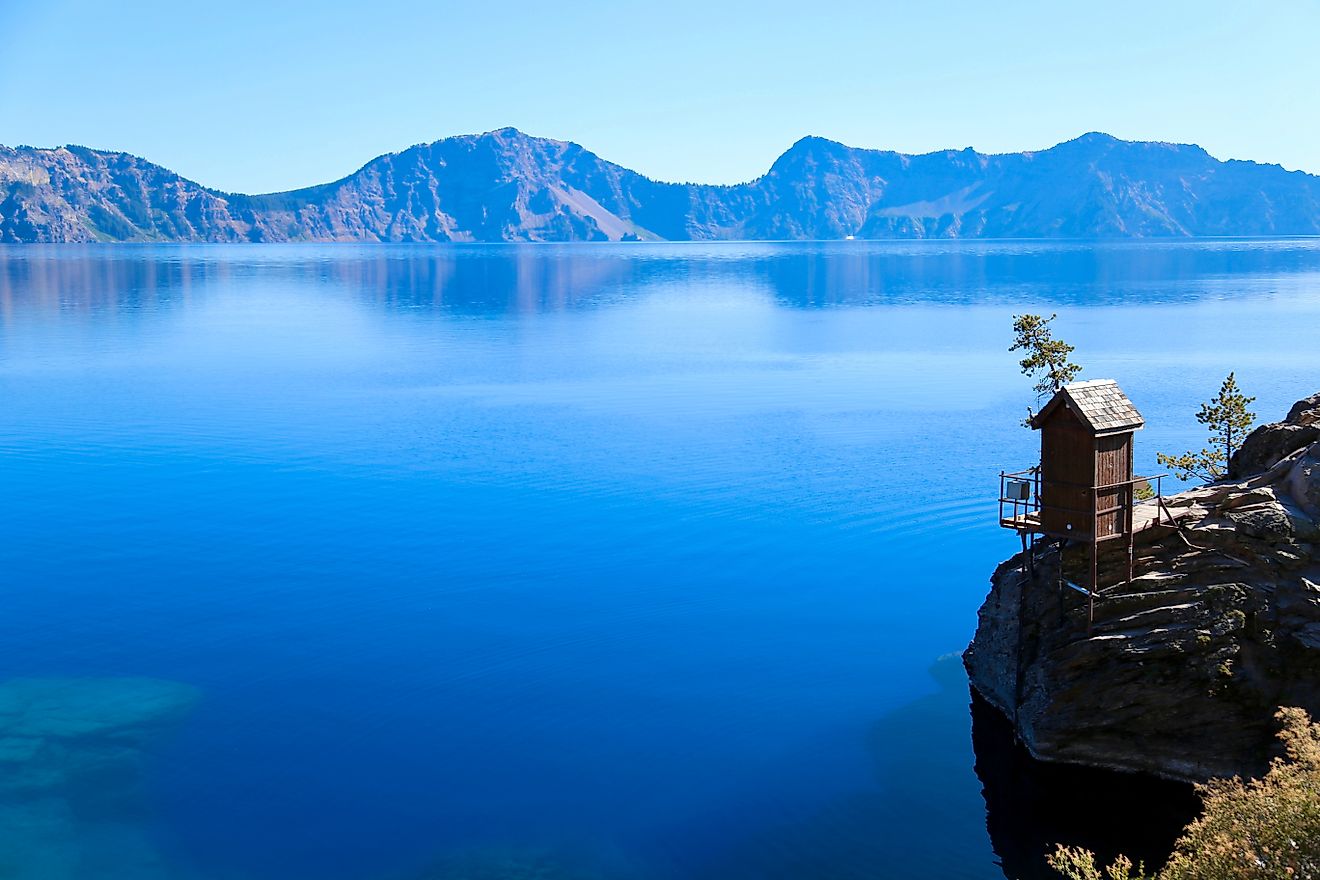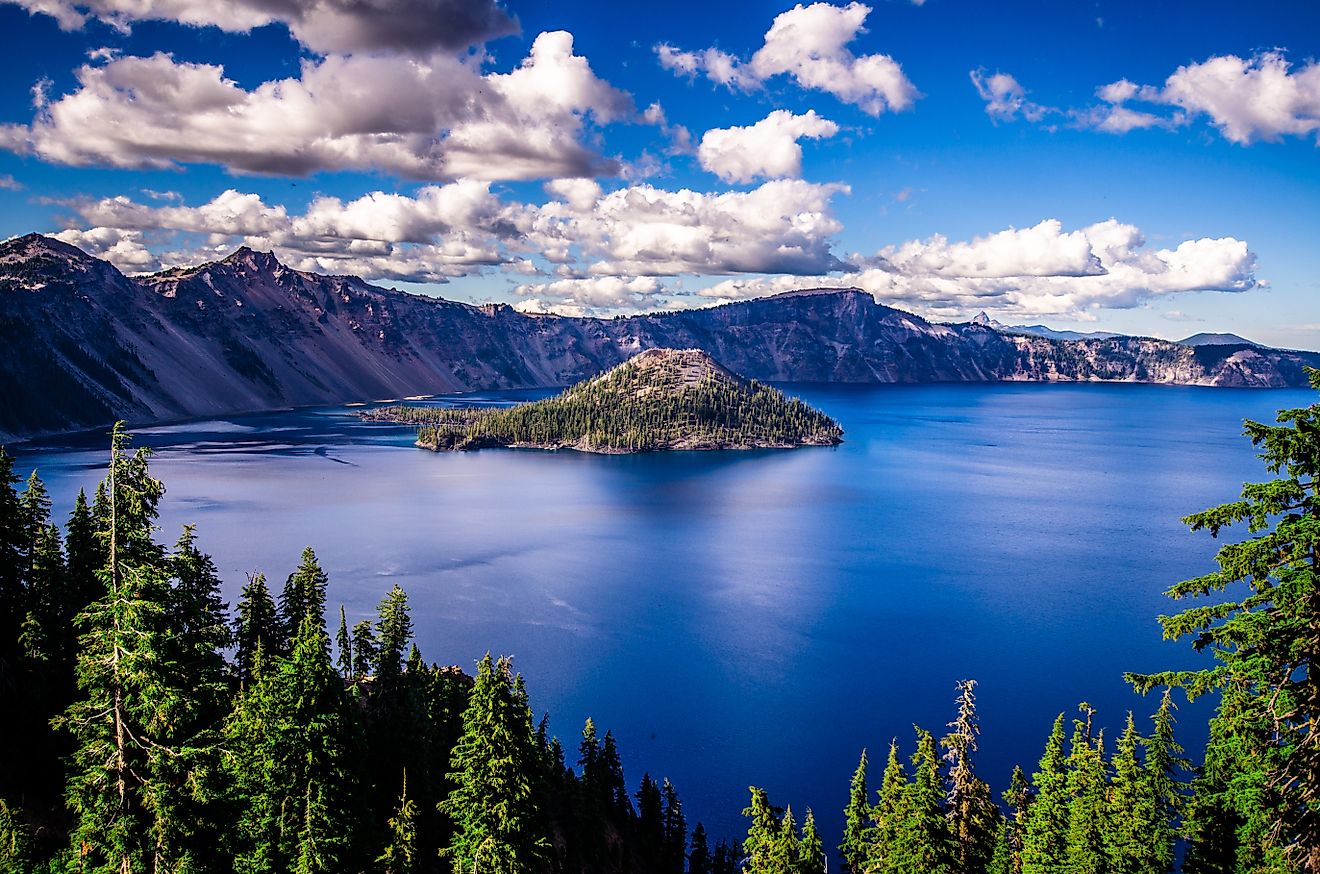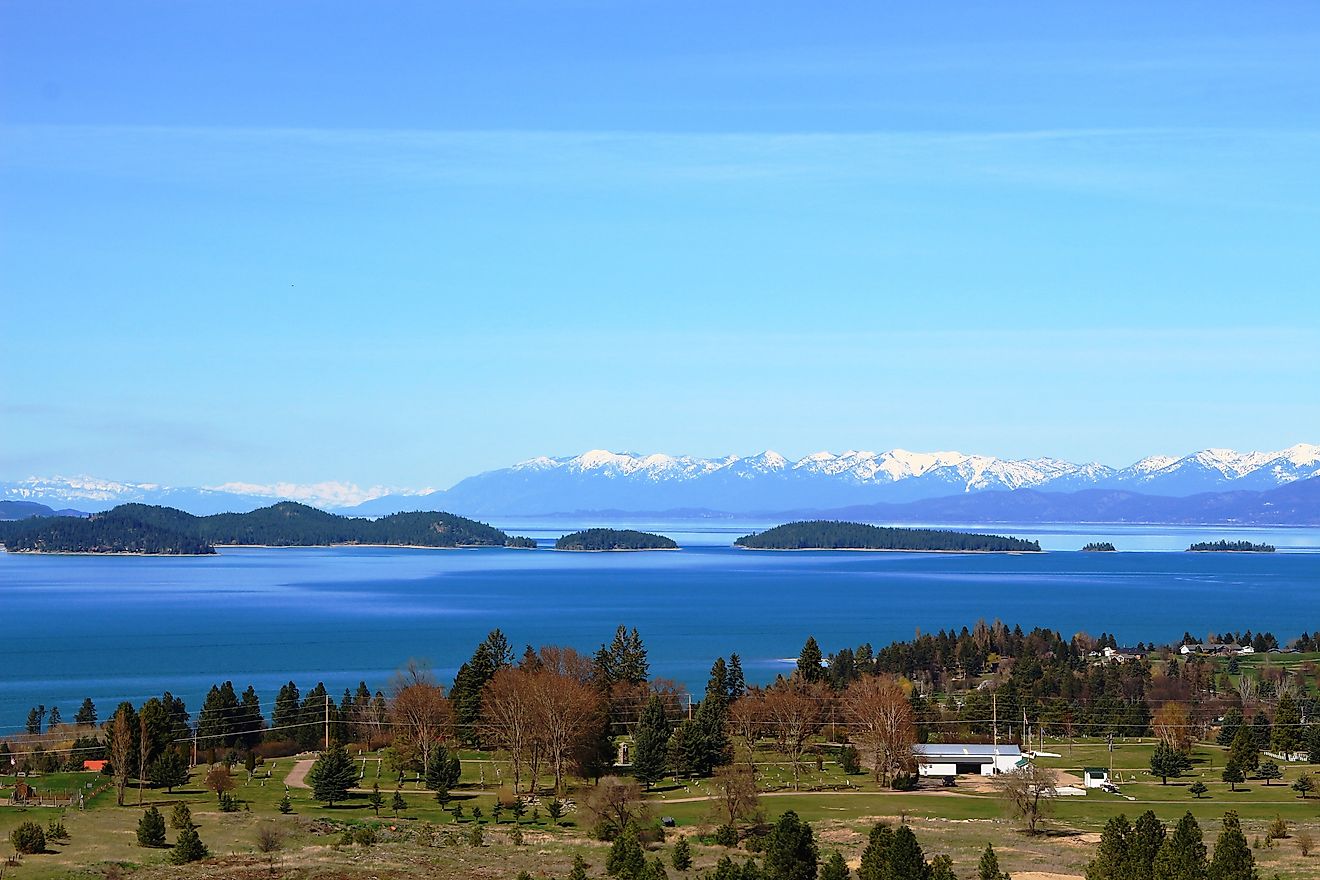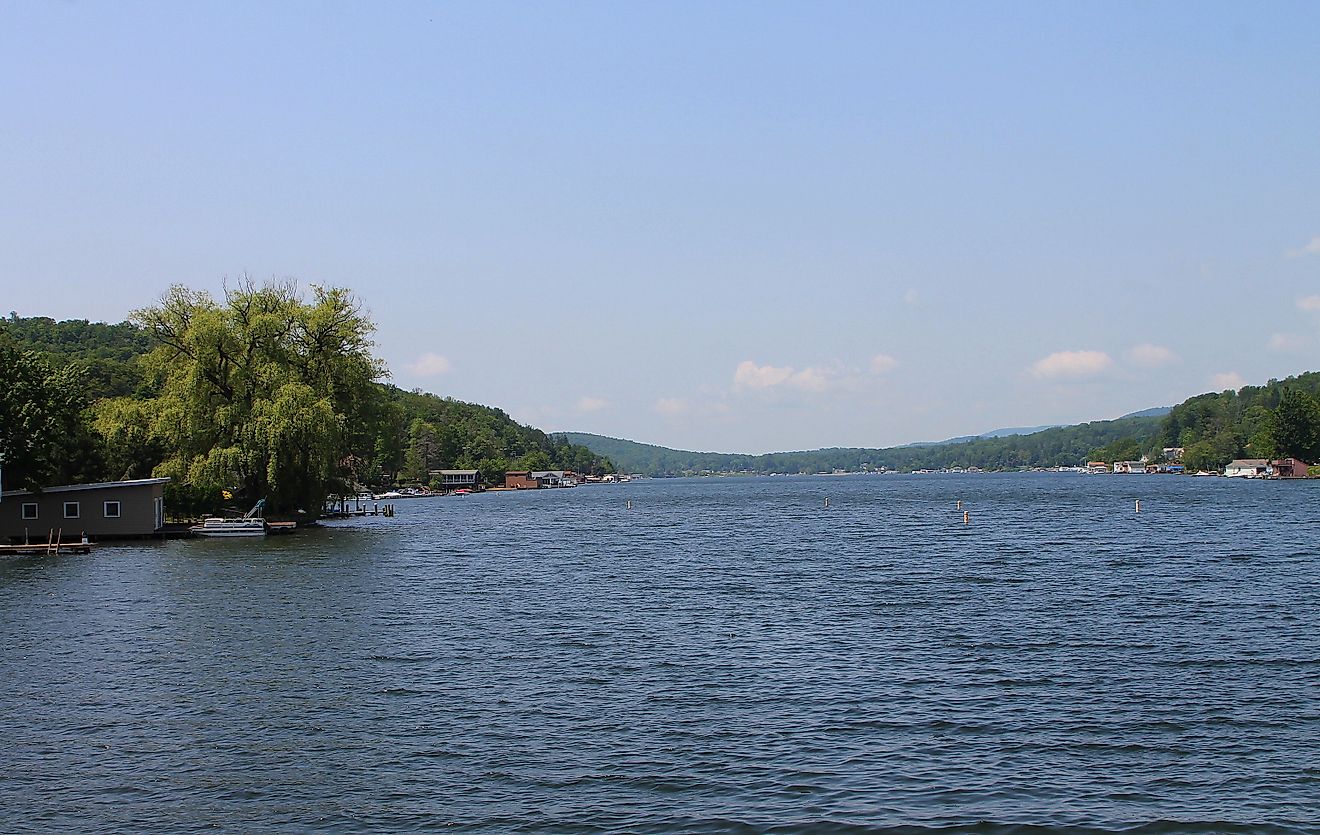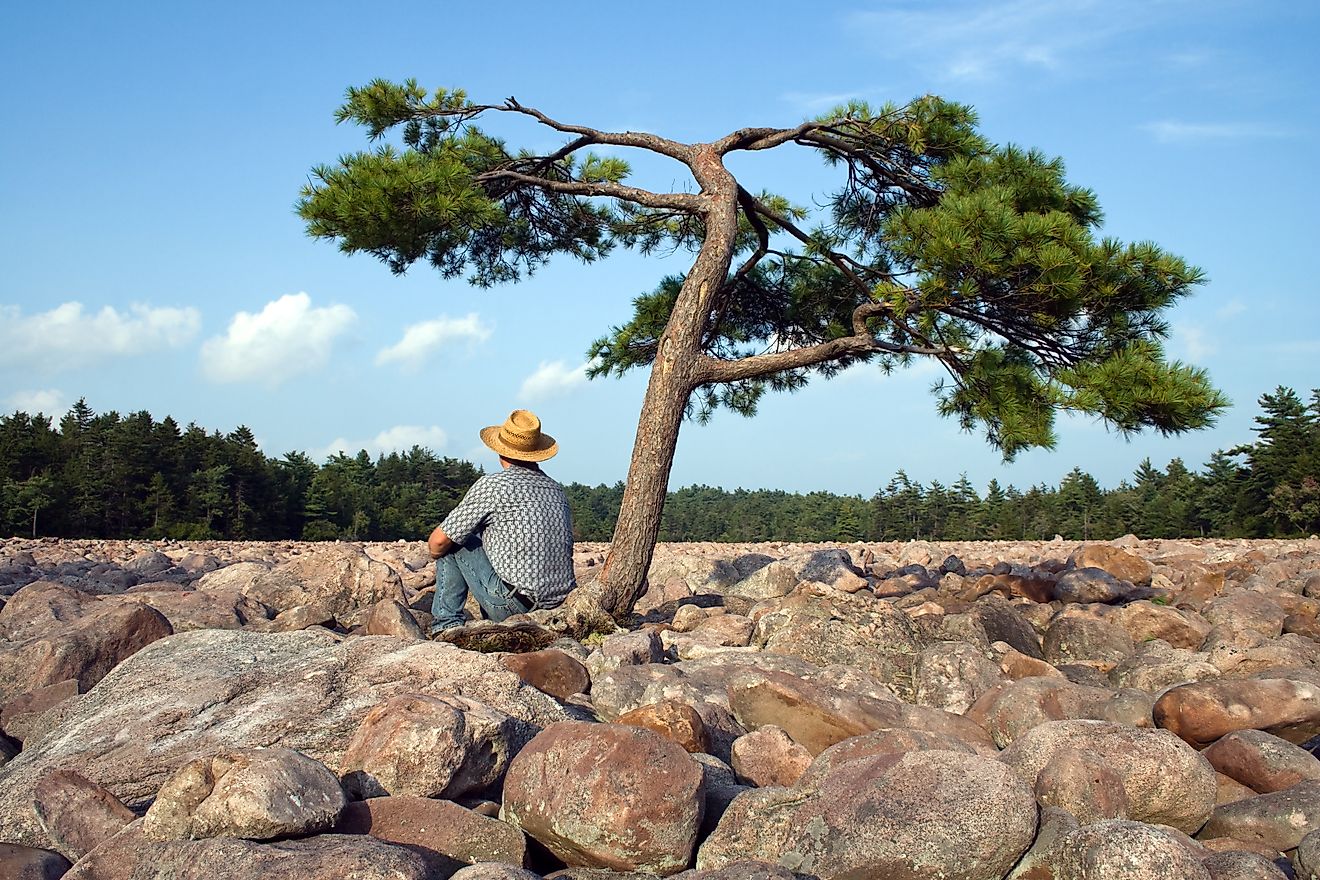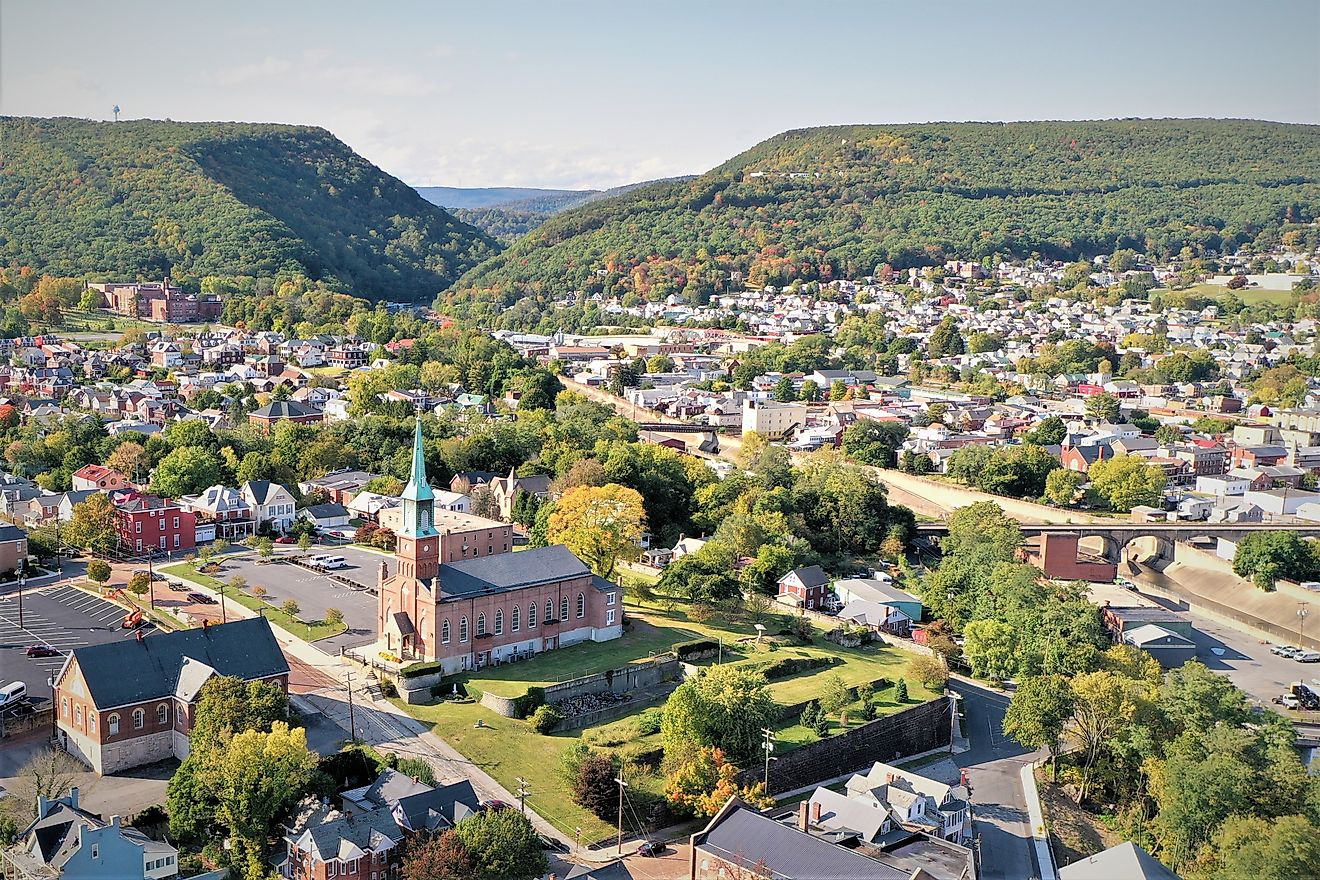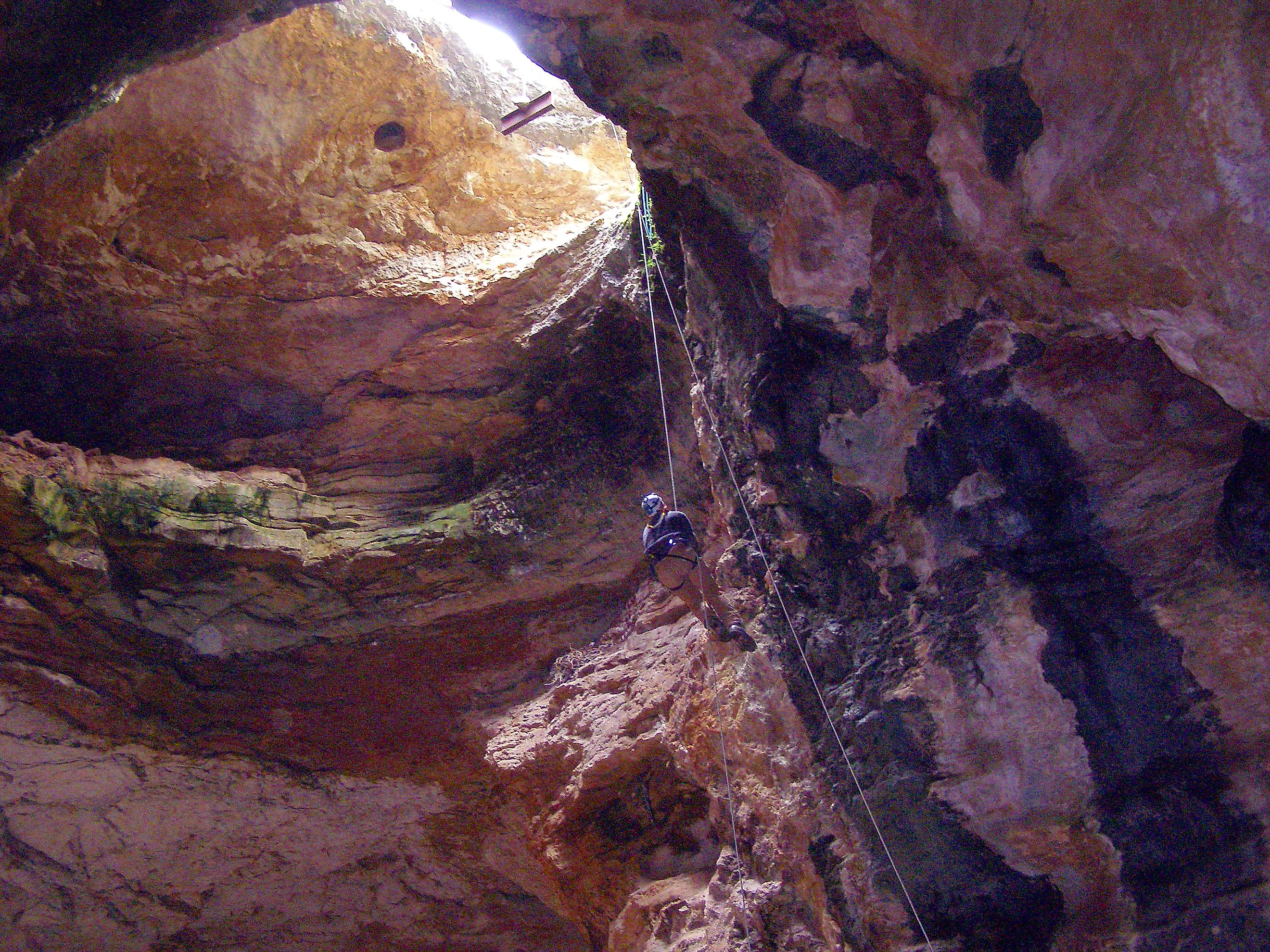
The Deepest Natural Holes in the US
Beneath the familiar surface of the American landscape lies a hidden world of vertical voids, collapsed caverns, and mysterious shafts plunging deep into the Earth. These natural chasms—some accessible, others forbidden—are remnants of immense geological processes that have shaped the terrain over millennia.
Whether carved by subterranean rivers, collapsed limestone chambers, or ancient sinkholes, these holes defy expectation and beckon both awe and curiosity. From caves so deep they generate their own wind to underwater blue holes teeming with alien-like marine life, the deepest natural holes in the US are portals into the unknown.
What secrets do they hide beneath their dark depths? What can they tell us about the Earth’s history, and how far down do they really go? Let's descend into the most mesmerizing natural abysses in America.
Fantastic Pit in Ellison’s Cave (Georgia) – America’s Deepest Known Vertical Cave Shaft
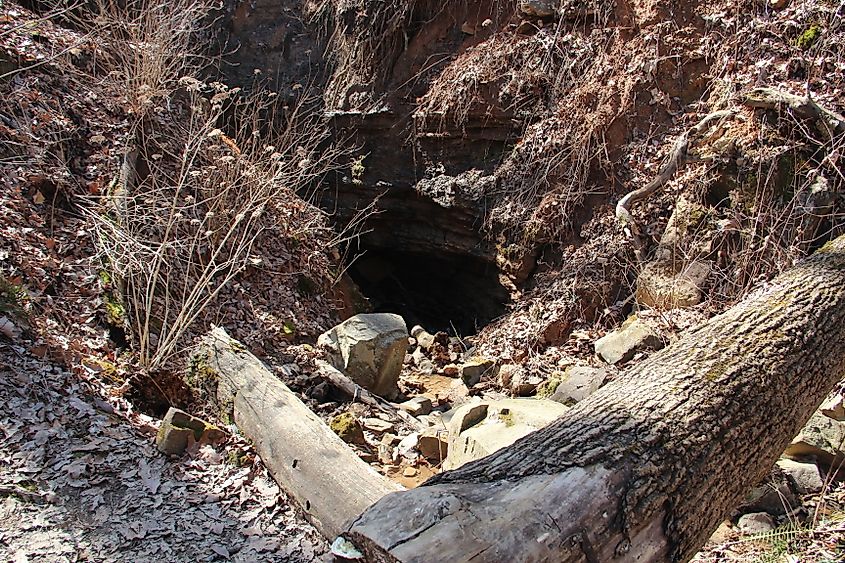
-
Depth: 586 feet vertical drop; 1,063 feet total cave depth
-
Location: Walker County, Georgia
Ellison’s Cave, hidden in Georgia’s Pigeon Mountain, contains the deepest unobstructed vertical shaft in the United States—aptly named Fantastic Pit. This pit drops a staggering 586 feet in a single, uninterrupted descent, equivalent to a 58-story building.
The entire cave system extends over 64,000 feet in surveyed passageways, with a total depth of 1,063 feet. Only expert cavers with significant vertical rope work experience should attempt this journey. The interior is often cold and damp, with slippery limestone and sudden drop-offs making the descent treacherous.
The cave's unique geology includes dramatic flowstone formations, delicate soda straws, and rare microbial colonies. Researchers and thrill-seekers are drawn to Ellison’s Cave for its extreme depth and the physical challenge it presents.
The Devil's Sinkhole (Texas) – A Portal to the Underworld
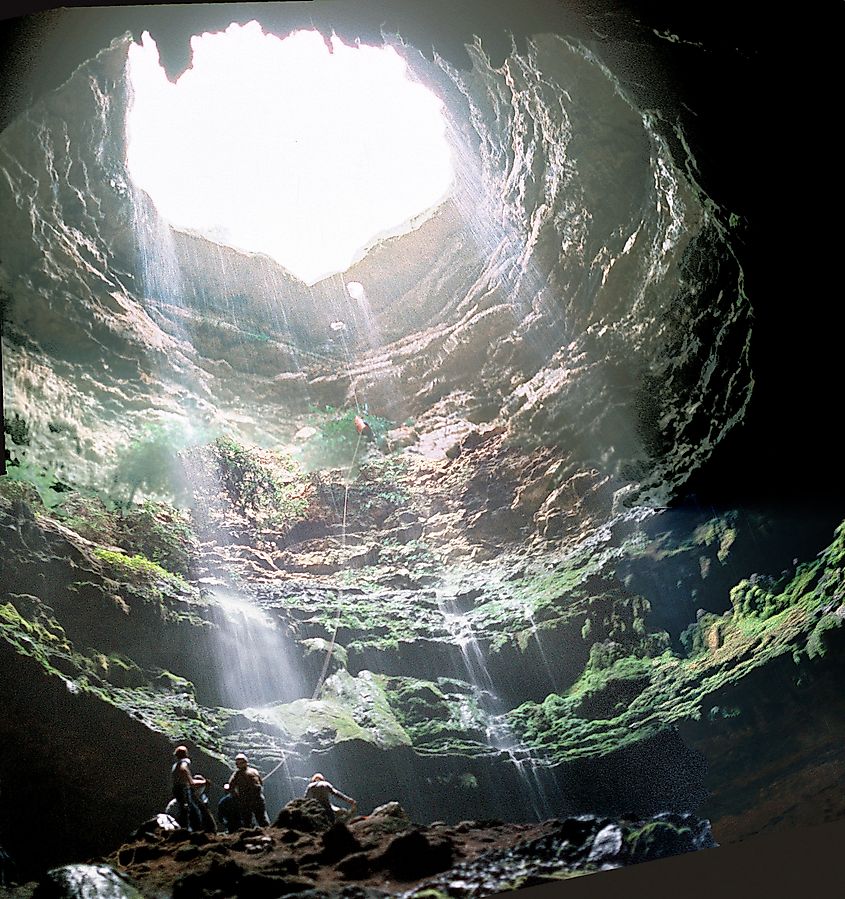
-
Depth: Over 400 feet
-
Location: Rocksprings, Texas
This vertical limestone shaft is more than just a massive hole in the ground—it’s an ecosystem and natural amphitheater that comes alive each evening in the summer. The Devil’s Sinkhole boasts a 50-foot-wide opening that plunges over 400 feet into a cavernous void beneath the Texas Hill Country.
Its walls are smooth and vertical, shaped by centuries of groundwater erosion. Visitors are not permitted to enter the sinkhole itself, but viewing platforms allow tourists to watch in awe as millions of Mexican free-tailed bats spiral out in search of insects.
Archaeological evidence suggests the sinkhole was once used by indigenous peoples, and its haunting depth continues to inspire local legends. Today, it serves as both a natural wonder and an important bat conservation site.
Neffs Cave (Utah) – Deep, Dangerous, and Mostly Off-Limits
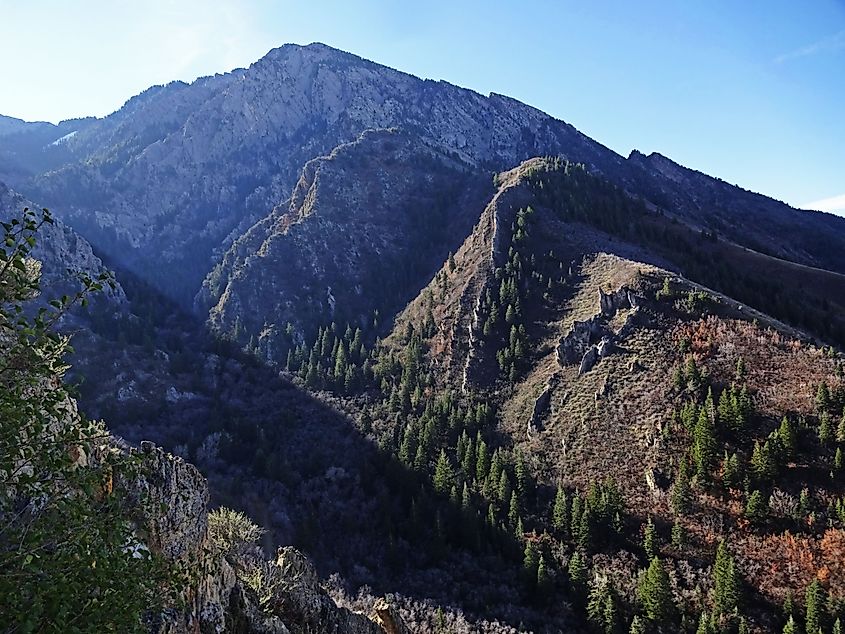
Neffs Canyon, Utah. Editorial credit: Andrey Zharkikh from Salt Lake City, USA via Wikimedia Commons
-
Depth: 1,163 feet
-
Location: Wasatch Range near Salt Lake City, Utah
Discovered accidentally by a hiker in 1949, Neffs Cave is a treacherous labyrinth of narrow, muddy passages and vertical drops. Though it may appear unassuming from the surface, it descends more than 1,100 feet and contains over 1,600 feet of mapped passages.
The cave is located in a designated wilderness area and is protected by the U.S. Forest Service due to its fragile ecosystem and geological sensitivity. Its dangers include loose rock, sudden vertical drops, and nearly impassable sections of constricted tunnels.
Because of these hazards, the cave is closed to recreational exploration. However, scientists and conservationists have used it to study cave ecosystems, mineral deposits, and climate data embedded in speleothems (cave formations).
Amberjack Hole (Florida) – Florida’s Marine Abyss
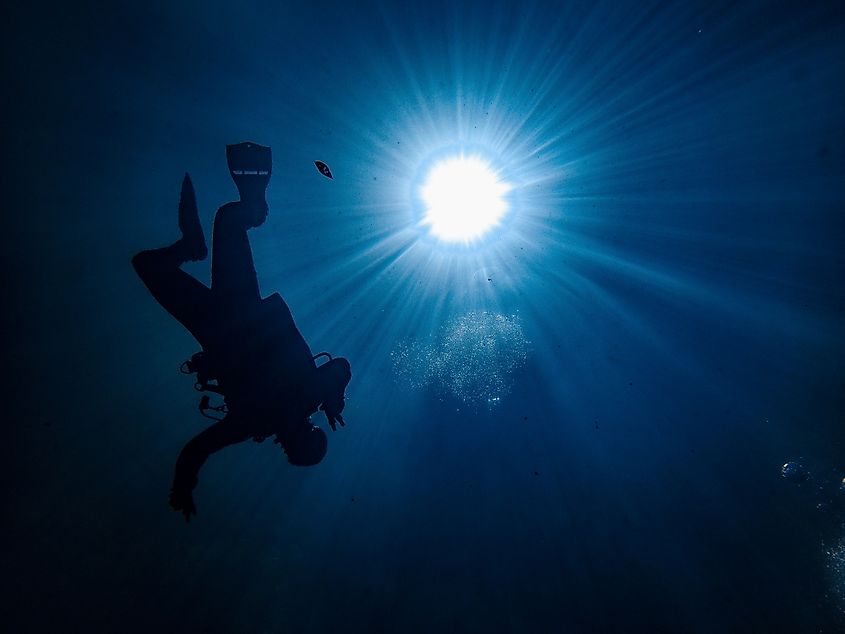
-
Depth: ~350 feet
-
Location: Gulf of America, off the coast of Sarasota, Florida
Located roughly 30 miles offshore, Amberjack Hole is one of the deepest marine blue holes discovered in US waters. These underwater sinkholes are often difficult to detect but provide critical insights into groundwater systems and marine ecosystems.
Explorers using submersibles and dive teams have documented strange life forms in the hole, including deep-dwelling crustaceans, rare fish, and anoxic zones where oxygen is nearly absent. Scientists also found evidence of groundwater seeping into the Gulf through the hole, suggesting a subterranean connection to Florida’s aquifer system.
The hole’s mineral-rich environment has also yielded radioactive isotopes such as radium and radon, which are helping scientists understand ancient water flow patterns and chemical exchanges between land and sea.
The Blue Hole (New Mexico) – A Desert Diving Mecca
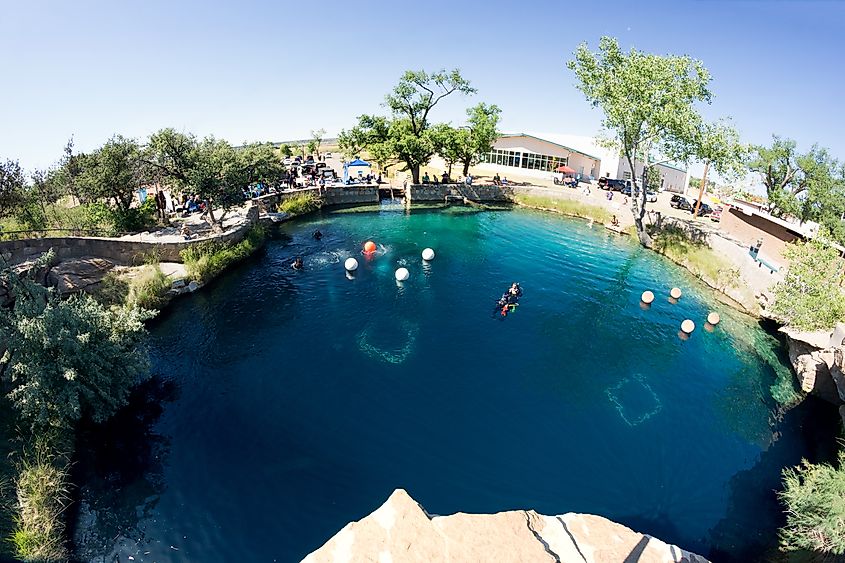
-
Depth: 81 feet
-
Location: Santa Rosa, New Mexico
In the middle of New Mexico’s high desert lies an oasis that seems almost supernatural in origin. The Blue Hole is a nearly perfectly circular spring-fed pool that reaches 81 feet deep and maintains a temperature of 61°F year-round.
The hole is a collapsed karst system that reveals a cavern of crystal-clear water, allowing visibility of up to 100 feet. Scuba divers travel from across the country to train here, and behind the pool lies a network of underwater caves that remains mostly unexplored.
Though it may not be the deepest, its juxtaposition with the arid desert landscape makes it one of the most visually striking holes in the country.
Natural Trap Cave (Wyoming) – A Fossil Time Capsule
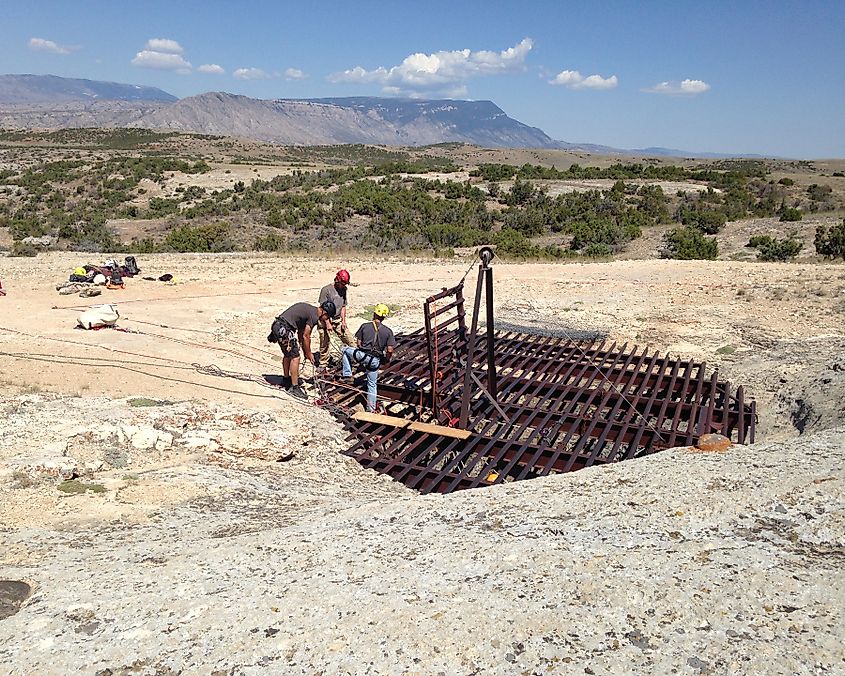
-
Depth: 85 feet
-
Location: Bighorn Mountains, Wyoming
Deceptively modest in depth, Natural Trap Cave holds an outsized role in the field of paleontology. This sinkhole acted as a natural animal trap for tens of thousands of years, capturing everything from bison to American lions to dire wolves.
Located near the base of the Bighorn Mountains, the 85-foot-deep shaft leads to a cavern with exceptionally stable conditions, preserving bones and other materials from the Ice Age. Paleontologists have recovered fossils dating back more than 20,000 years.
The site remains a focus of intense scientific study, offering clues about North America’s prehistoric ecosystems and the animals that once roamed the region.
Cedar Sink (Kentucky) – A Walkable Sinkhole in Mammoth Cave Country
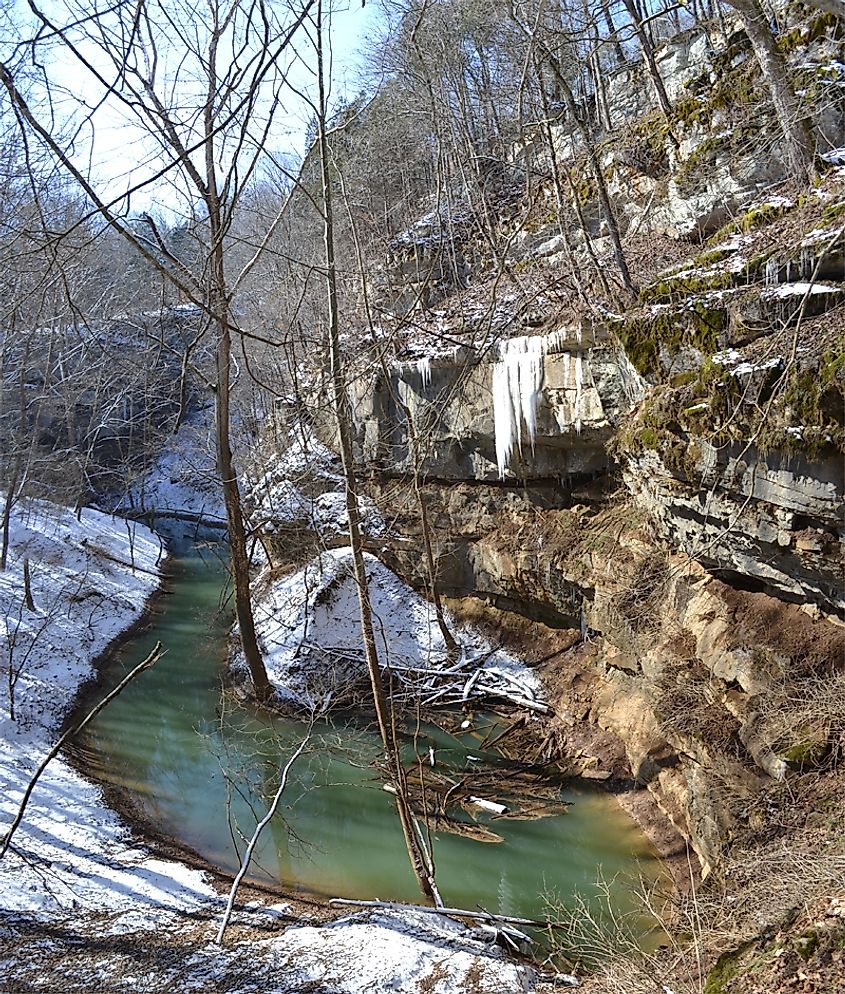
-
Depth: 300 feet
-
Location: Mammoth Cave National Park, Kentucky
Part of the world’s largest known cave system, Cedar Sink is a massive collapsed cavern surrounded by towering cliffs. Unlike many entries on this list, visitors can hike into the depression and explore the ecosystem that has flourished inside.
A river runs intermittently through the bottom of the sink, disappearing into unseen cave passages. Dense vegetation lines the walls, giving the area a lush, almost primeval appearance.
The sinkhole offers a rare opportunity to safely walk into the remnants of a once-active cave, making it a highlight of Mammoth Cave National Park.
Hellhole Cave (West Virginia) – Cold, Deep, and Vital for Bats
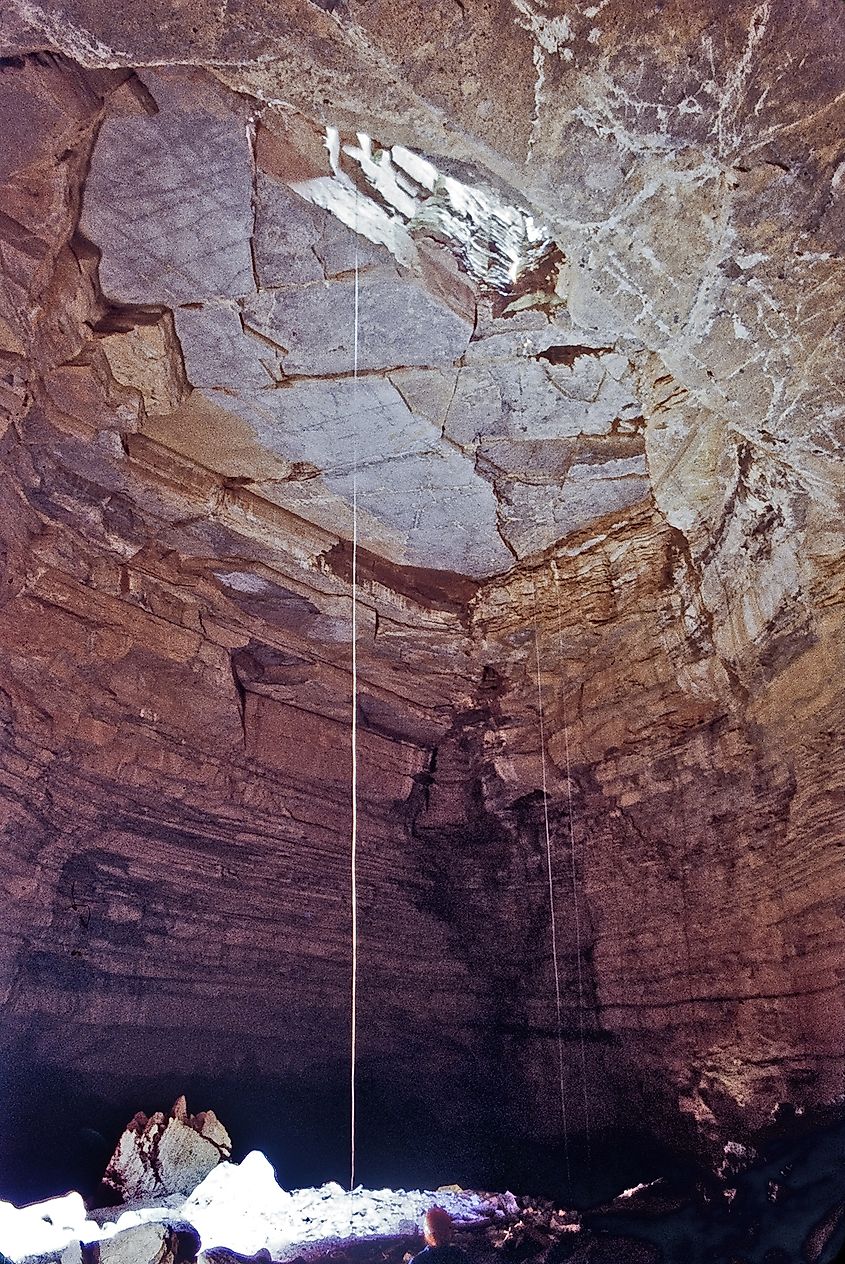
Pit entrance to Hellhole cave in West Virginia. Caver in orange helmet visible at the bottom of the ropes. Editorial credit: Dave Bunnell via Wikimedia Commons
-
Depth: 737 feet
-
Location: Germany Valley, West Virginia
Hellhole Cave is a deep and complex cave system known for its chilly air currents and massive vertical shafts. With over 40 miles of mapped passages, it ranks among the deepest and longest in the eastern United States.
The cave serves as a critical hibernation site for endangered bat species, including the Indiana and Virginia big-eared bats. Because of its ecological importance, access is highly restricted and carefully managed.
The cave’s cold, stable environment has made it a focus of biological and geological research, with formations that include massive flowstone and delicate crystal pools.
Descending Into the Unknown
The deepest natural holes in the US are more than geological curiosities—they are living laboratories, fossil vaults, and windows into Earth’s dynamic interior. From vertical caves that challenge the most seasoned spelunkers to underwater sinkholes brimming with undiscovered life, these formations highlight the vastness and mystery of our planet.
They remind us that beneath the everyday landscape lies an alien world filled with darkness, danger, and discovery. And while mountains and rivers may catch the eye, it’s the voids beneath our feet that often hold the oldest stories.
